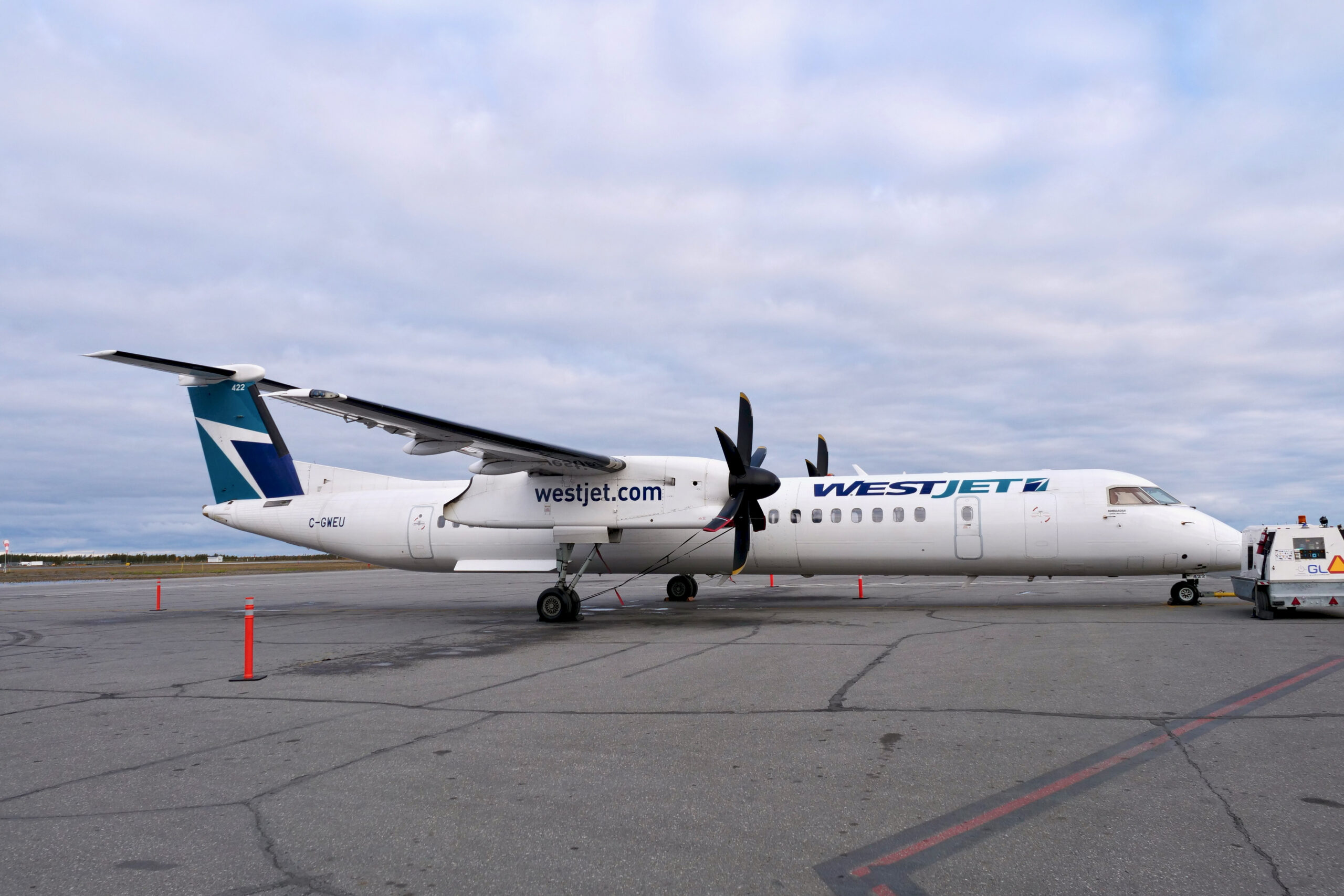Introduction
On 13 February 2025, a WestJet Encore de Havilland Dash 8-400 (Q400), registered C-GTWE, was performing positioning flight WR-8989 from Regina International Airport (YQR) to Calgary International Airport (YYC), Canada. The aircraft, operated by WestJet Encore, was crewed solely by two flight crew members and was not carrying passengers at the time of the occurrence.
During two consecutive takeoff attempts from Runway 13 at Regina, the flight crew experienced a loss of airspeed indication on the first officer’s Primary Flight Display (PFD), prompting both takeoff attempts to be rejected.
The Transportation Safety Board of Canada (TSB) investigated the incident and attributed the issue to a poorly seated seal in the #2 Air Data Unit (ADU). The aircraft was removed from service and returned to operations nine days later after corrective maintenance and system testing.
Sequence of Events
First Takeoff Attempt
• The aircraft lined up for departure on Runway 13 at Regina International Airport.
• As the takeoff roll commenced, the first officer’s PFD failed to display airspeed information, a critical flight parameter required for safe takeoff.
• The captain, who had normal airspeed indications on their PFD, made the decision to abort the takeoff immediately.
• The aircraft was brought to a safe stop and taxied back to the apron for troubleshooting.
Initial Maintenance Assessment
• WestJet Encore maintenance personnel performed a preliminary troubleshooting inspection.
• No immediate faults were identified, and no visible issues with the pitot-static system or flight data sensors were observed.
• Maintenance personnel recommended a second takeoff attempt, believing the issue to be transient.
Second Takeoff Attempt
• The aircraft taxied out once again and lined up for departure on Runway 13.
• As the takeoff roll commenced, the same issue reoccurred, with the first officer’s airspeed indicator failing to register any data.
• Recognising the persistent failure, the captain rejected the takeoff for a second time, bringing the aircraft to a halt and returning to the apron.
Final Maintenance Investigation and Findings
• Following the second rejected takeoff, maintenance conducted a more thorough inspection of the aircraft’s air data and pitot-static systems.
• Technicians discovered that the #2 Air Data Unit (ADU) had a seal that was not fully seated, causing intermittent failures in airspeed data transmission.
• The fittings were removed and reinstalled properly, and a full system test was conducted to verify airspeed indication functionality.
• After successful testing, the aircraft was cleared for service and returned to operations nine days later.
Aircraft and System Information
The de Havilland Dash 8-400 (DHC-8-400, commonly known as Q400) is a twin-turboprop regional airliner featuring an Electronic Flight Instrument System (EFIS). The aircraft relies on air data units (ADUs) and pitot-static sensors to provide critical flight parameters, including airspeed, altitude, and vertical speed information.
The Air Data Unit (ADU) converts pitot-static pressure data into digital airspeed and altitude readings. A failure or incorrect installation of an ADU component can result in erroneous or missing airspeed indications, which directly impacts pilot situational awareness and takeoff decision-making.
Key Safety Concerns and Implications
1. Airspeed Indication Loss During Takeoff
Airspeed indication failures during takeoff are considered high-risk events in aviation. Takeoff is the most critical phase of flight, and incorrect or missing airspeed data can lead to:
• Delayed rotation or premature liftoff, causing instability.
• Inability to calculate V1 (decision speed) and VR (rotation speed) accurately.
• Potential asymmetric thrust scenarios if only one pilot has airspeed indications.
2. Dual Pitot-Static System Redundancy
In this case, the captain’s airspeed indication was functioning, allowing for immediate rejection of takeoff. However, a dual system failure affecting both pilots could have resulted in a far more dangerous scenario.
3. Maintenance Risk Assessment and Troubleshooting Protocols
• The decision to attempt a second takeoff without a full system inspection was a misjudgment.
• A more thorough investigation after the first rejected takeoff could have identified the faulty ADU installation earlier, preventing the second rejected takeoff.
• The incident highlights the need for stricter maintenance protocols when dealing with unreliable airspeed indications.
4. Crew Resource Management (CRM) and Flight Crew Decision-Making
• The flight crew’s decision to reject both takeoff attempts was correct and aligned with standard operating procedures.
• The ability to identify unreliable airspeed indications and react immediately is a critical element of flight safety.
• The crew prioritised safety over operational delays, ensuring that the aircraft did not depart with a potentially hazardous system failure.
Conclusion
The WestJet Encore Dash 8-400 experienced two consecutive rejected takeoffs due to unreliable airspeed indications on the first officer’s Primary Flight Display (PFD). The issue was traced to a poorly seated seal on the #2 Air Data Unit (ADU), which resulted in intermittent failures in airspeed data transmission.
The Transportation Safety Board of Canada (TSB) determined that the initial troubleshooting and risk assessment were insufficient, as the aircraft was cleared for a second takeoff attempt before a full system inspection was performed.
After corrective maintenance, including the proper installation of the ADU seal and verification testing, the aircraft was returned to service nine days later.
This incident underscores the importance of thorough maintenance checks following airspeed-related anomalies and reinforces the critical role of pilots in recognising and responding to unreliable airspeed indications during takeoff.
Disclaimer
“This report is based on publicly available information and investigations as of 12 March 2025. While every effort has been made to ensure accuracy, we cannot guarantee the completeness of the details provided. If you are the rightful owner of any referenced materials and wish for them to be removed, please email takedown@cockpitking.com.”
